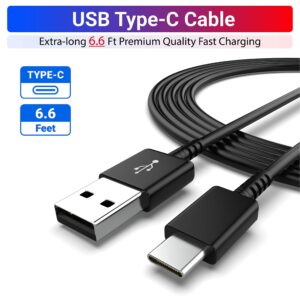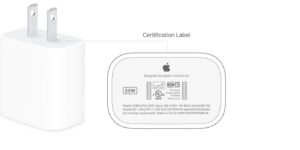Looking to find out how many amp battery charger you need? We’ve got you covered! Choosing the right amp battery charger is crucial for efficient charging and maintaining the lifespan of your batteries. In this article, we’ll dive into the factors you need to consider to determine the ideal amp rating for your specific battery needs. So, whether you’re a seasoned DIY enthusiast or a newbie to the world of batteries, keep reading to find out how to power up your devices in the most effective way. Let’s get started!
How Many Amp Battery Charger Do I Need?
If you’re a car enthusiast or someone who relies heavily on batteries, you may have found yourself wondering: how many amps does my battery charger need to be? It can be confusing to determine the appropriate charging capacity for your batteries, especially with various options available in the market. In this article, we will help you understand the factors that impact your battery charger selection process and guide you in choosing the right amp rating for your battery charger.
Understanding Amps and Battery Chargers
Before delving into how many amps your battery charger needs, it’s important to understand what amps are and how they relate to battery charging. Amps, short for amperes, measure electrical current. In the context of battery charging, amps indicate the rate at which electric current flows into the battery. A battery charger delivers current to your battery, replenishing its charge and restoring its capacity.
Determining the Amp Rating
Several factors contribute to determining the appropriate amp rating for your battery charger. These factors include the type and size of your battery, the desired charging time, and the charger’s compatibility with your battery. Let’s explore each of these factors in detail:
Battery Type and Size
Different types of batteries have varying ampere-hour (Ah) ratings, which indicate their capacity to store electrical energy. The ampere-hour rating tells you how many amps the battery can deliver over a specific period. Generally, larger capacities require higher amp charging rates to charge the battery efficiently.
For example, a small 12V battery commonly found in motorcycles or lawn mowers may have a capacity of 5Ah. In this case, a charger with an amp rating of 1-5 amps should suffice. On the other hand, larger 12V batteries in vehicles or boats, with capacities ranging from 50Ah to 100Ah, will benefit from a charger with an amp rating of 10-20 amps for faster charging.
Desired Charging Time
The amount of time you can allocate for charging also influences the choice of amp rating. Generally, higher amp ratings result in faster charging times. If you need your battery charged quickly, a higher amp charger will be more suitable. However, it’s important to note that excessive charging currents can damage the battery, so it’s essential to find a balance between charging time and battery health.
Charger Compatibility
Not all chargers are compatible with all types of batteries. It’s crucial to ensure that the charger you choose is compatible with your battery’s chemistry and voltage. The charger’s manual or product description will provide information on compatibility. Make sure to read these specifications carefully to ensure you select a charger that is suitable for your battery.
Common Battery Charger Amp Ratings
Battery chargers typically come in a range of amp ratings to cater to different battery sizes and charging requirements. Here are some common amp ratings and their recommended usage:
2-6 Amps
– Suitable for small batteries with capacities up to 20Ah, such as motorcycle and lawnmower batteries.
– Ideal for slow trickle charging and maintenance charging.
– Extended charging times compared to higher amp chargers.
10-20 Amps
– Recommended for mid-sized batteries with capacities ranging from 40Ah to 100Ah, found in cars, boats, and RVs.
– Faster charging times compared to lower amp chargers.
– Can handle occasional deep cycling and charging larger batteries.
25-40+ Amps
– Designed for heavy-duty charging applications, such as commercial vehicles, heavy machinery, or deep-cycle batteries.
– Rapid charging capabilities for larger batteries.
– Suitable for professional use or high-demand charging situations.
Factors to Consider Beyond Amp Rating
While amp rating is essential in determining the appropriate charger for your battery, it’s not the only factor to consider. Here are a few additional factors to keep in mind:
Automatic Vs. Manual Charging
Consider whether you prefer a charger with automatic functions or one that requires manual monitoring. Automatic chargers are more convenient as they can adjust the charging rate based on the battery’s condition. They also offer safety features to prevent overcharging. Manual chargers require you to monitor the charging process and disconnect the charger manually when the battery is fully charged.
Additional Features
Some chargers come with additional features that enhance charging efficiency and battery health. These may include:
– Reverse polarity protection: Prevents damage caused by incorrect connection.
– Float mode: Maintains a fully charged battery without overcharging.
– Desulfation mode: Helps remove sulfate build-up on battery plates for improved performance.
Brand Reliability and Warranty
Consider the reputation and reliability of the charger’s brand. Look for warranties that cover manufacturing defects and ensure customer support is available in case you encounter any issues. Reliable brands provide peace of mind and quality assurance.
Tips and Best Practices
To help you make the most of your battery charger and ensure optimal battery health and longevity, here are some additional tips and best practices:
– Read the charger’s manual thoroughly before use to understand its features and functionality.
– Ensure proper ventilation when charging to prevent overheating.
– Connect the charger to the battery before plugging it into the power source.
– Clean battery terminals before charging to establish a good connection.
– Regularly inspect the charger for any signs of damage or wear.
– Follow the recommended charging times and avoid leaving the charger connected for extended periods.
– Store the charger in a cool and dry place when not in use.
Choosing the right amp rating for your battery charger is crucial to ensure efficient and safe charging. By considering factors such as battery type and size, desired charging time, and charger compatibility, you can make an informed decision. Remember to also consider additional features, brand reliability, and best practices to optimize battery charging and prolong its lifespan. With a well-suited battery charger, you can keep your batteries powered up and ready for action whenever you need them.
Frequently Asked Questions
What size amp battery charger do I need?
The size of the amp battery charger you need depends on the type and capacity of your battery. To determine the appropriate size, you should consider the battery’s amp-hour (Ah) rating.
How do I calculate the amp-hour rating of my battery?
To calculate the amp-hour rating of your battery, you can refer to the manufacturer’s specifications or look for a label on the battery. It is typically expressed as a number followed by “Ah”.
What is the general guideline for choosing the amp capacity of a battery charger?
As a general guideline, it is recommended to choose a battery charger with an amp capacity between 10-30% of the battery’s amp-hour rating. For example, if your battery has an amp-hour rating of 100Ah, a charger with an amp capacity of 10-30 amps would be suitable.
Can I use a charger with a higher amp rating than my battery’s amp-hour rating?
Yes, you can use a charger with a higher amp rating than your battery’s amp-hour rating. However, it is important to monitor the charging process closely and ensure that the charger does not overcharge the battery, as it may cause damage.
What are the potential risks of using a charger with a lower amp rating than required?
If you use a charger with a lower amp rating than required, it may take longer for your battery to fully charge. This can lead to incomplete charging, decreased battery performance, and a shorter overall lifespan of the battery.
Final Thoughts
To determine how many amps your battery charger needs, consider the battery’s capacity and charging time. A good rule of thumb is to choose a charger that has an output of 10-30% of the battery’s amp-hour rating. For example, if you have a 100Ah battery, a charger with an output of 10-30 amps would be suitable. It’s important to avoid using a charger with too high of an amp rating, as it may damage the battery. On the other hand, using a charger with a lower amp rating may result in longer charging times. So, when asking yourself “how many amp battery charger do I need,” make sure to take the battery’s capacity and charging time into account.




